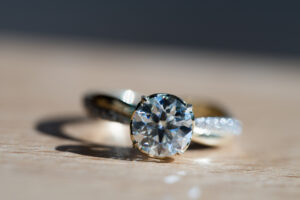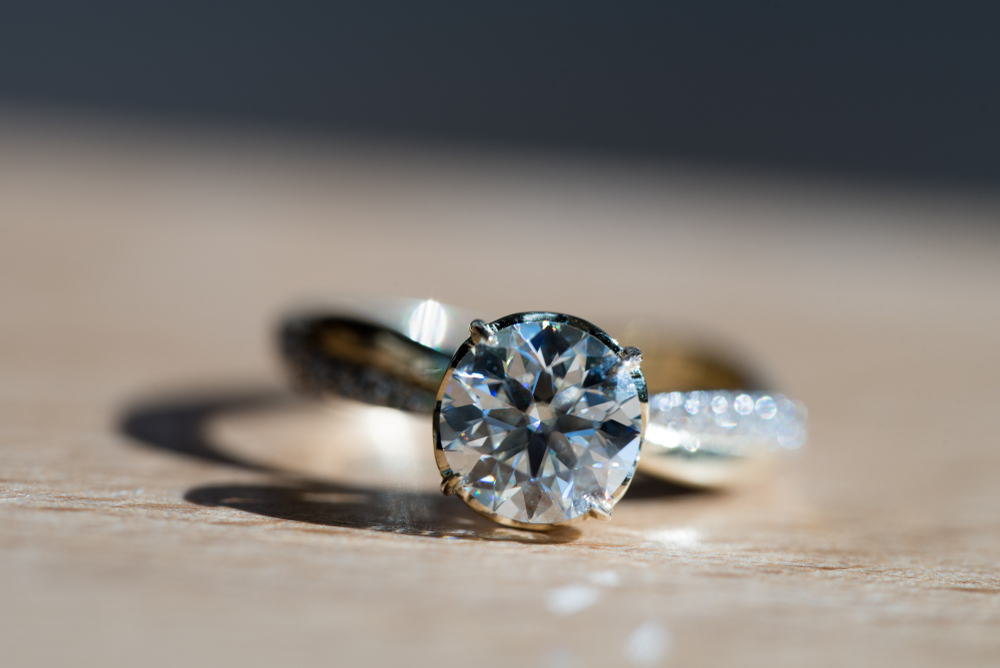
In the realm of poetry, where words dance like intricate brushstrokes on the canvas of human emotion, diamond rings emerge as dazzling muses, inspiring verses that capture the essence of love, time, and the profound connections that define the human experience. Beyond their physical brilliance, diamond rings in poetry become more than mere adornments; they metamorphose into verses carved in stone, etching tales of love and eternity into the collective memory of humanity.
At the heart of the poetic brilliance of diamond rings lies the metaphorical dance between light and stone. Poets, with their pens dipped in the ink of imagination, frequently draw upon the visual allure of diamonds to craft verses that celebrate the luminosity of love. The sparkle of a diamond becomes a metaphor for the twinkle in a lover’s eyes, the radiant glow that mirrors the inner brilliance of shared moments. In the poetry of e.e. cummings, diamonds are likened to “kisses floating in the night,” a celestial dance of light and emotion that transcends the material realm. The symbolic significance of diamonds in poetry extends beyond romantic themes to encompass broader reflections on the nature of existence. Diamonds, with their rarity and value, metamorphose into symbols of the preciousness of time. Poets, contemplative philosophers of the written word, weave verses that explore the transient beauty of diamonds, drawing parallels to the fleeting nature of life. John Keats, in his ode “To a Nightingale,” laments the ephemeral nature of beauty, comparing it to the brilliance of a diamond that fades in the relentless march of time. The act of exchanging diamond rings becomes a poetic ritual, a symbolic gesture that transcends the spoken word. In the verses of Pablo Neruda, the exchange of a diamond ring becomes a profound declaration of love, a promise written in stone. The circular shape of the ring, symbolizing eternity, takes on a poetic weight, suggesting that love, like the unbroken circle, knows no end. Neruda’s lines resonate with this sentiment: “I love you as certain dark things are to be loved, in secret, between the shadow and the soul.”
Moreover, the multifaceted nature of diamonds becomes a rich metaphor for the complexity of human emotions. Poets, those interpreters of the human heart, use the facets of a diamond to mirror the intricacies of love – its joys, sorrows, and the myriad emotions that color the human experience. Rumi, the celebrated Sufi poet, invites readers to “Sell your cleverness and buy bewilderment.” In the reflective surface of a diamond’s facets, one may find a reflection of the bewilderment that accompanies the journey of love. The tradition of gifting a diamond ring becomes a poetic motif, woven into the fabric of countless verses that celebrate the union of souls. In Elizabeth Barrett Browning’s “Sonnets from the Portuguese,” the exchange of a diamond ring is akin to a sacred vow, a promise that transcends the boundaries of mortal existence. The poet’s declaration, “I love thee to the depth and breadth and height my soul can reach,” elevates the diamond ring from a mere token of affection to a symbol of transcendent, boundless love.
In conclusion, the poetic brilliance of diamond rings lies in their ability to transcend the material realm and become vessels for the deepest human emotions. Through the verses of poets, these precious gems become more than symbols of wealth or status; they become metaphors for the luminosity of love, the preciousness of time, and the intricate dance of emotions that defines the human experience. Diamond rings, in the realm of poetry, transform into verses carved in stone, echoing through the corridors of literary history as timeless expressions of the enduring beauty of love and human connection.
